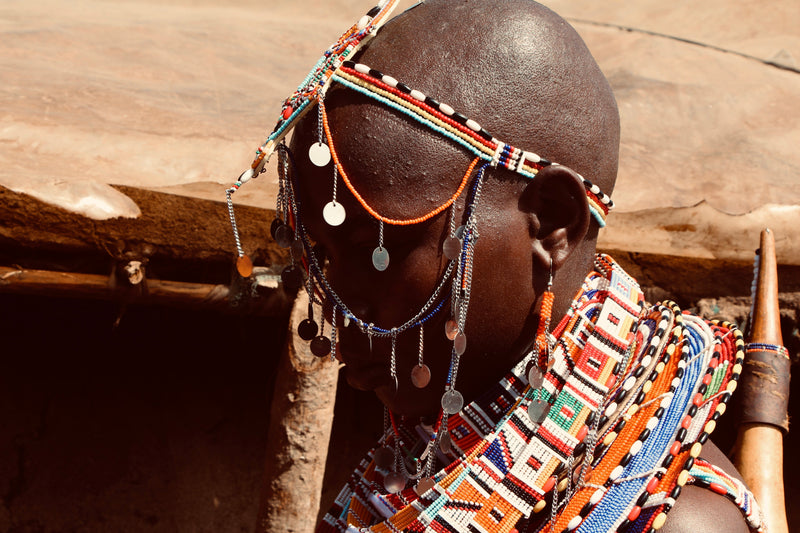
Tales & Tells: The Evolution of Maasai Beading

Did you know that long before glass beads ever arrived in Africa, the Maasai community was already adorning themselves with handcrafted accessories made from nature’s own materials?
Beads from the Earth: Before the Trade Ships Came
The Maasai traditionally crafted their accessories using locally available natural materials like:
Clay
Bone and ivory
Charcoal and wood
Shells and seeds
Copper and brass
Each bead was shaped by hand, polished with care, and often passed down through generations.
And while beads may steal the show, the real unsung hero was the thread: traditionally made from animal sinew or — more recently — recycled grain bags. These sacks would be sliced into thin strips, rolled tightly, and twisted into strong, flexible cords.
The Arrival of Glass Beads
The glass beads arrived in the 19th century via trade routes from Europe and India. They made their way inland from coastal hubs like Mombasa and Zanzibar.
For the Maasai, glass beads were more than just decoration. They were a new language — brighter, more durable, and varied in colour. A tool for storytelling, status, and ceremony.
What started as trade quickly became tradition.

From Then to Now: The Legacy Lives On
Today, our artisans continue this tradition — using glass beads, but with techniques and symbols passed down through generations. At Lorien, every beaded piece you see carries centuries of history, craftsmanship, and cultural pride.
We bead not just for beauty — but for memory, for connection, and for the future.